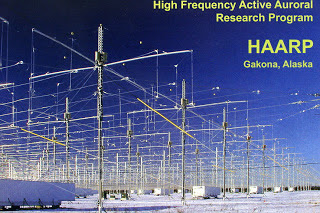(HAARP) lancerà la sua prima campagna di ricerca scientifica da quando
l'impianto è stato rilevato dalla University of Alaska Fairbanks (UAF) Istituto
Geofisico 18 mesi fa.
The Luxembourg broadcast will begin as early as 6 p.m. on 19 and 20 February Alaska Standard Time (AKST) and conclude by 6:40 p.m. In Coordinate Universal Time (UTC), the broadcasts will begin as early as 03:00 on 20 and 21 February and conclude by 03:40. Tune in to 2.7 MHz or 3.3 MHz (2700 KHz or 3300 KHz), or both! The program is approximately 10 minutes in duration and will repeat until 6:40 p.m. AKST or 03:40 UTC.
http://swling.com/blog/2017/02/haarp-campaign-update-luxembourg-broadcast-artificial-aurora/
On
February 20 (UTC), Alaska’s High Frequency Active Auroral Research Program (HAARP) will launch its first scientific research
campaign since the facility was taken over by the University of Alaska
Fairbanks (UAF) Geophysical Institute 18 months ago. UAF Space Physics Group
Assistant Research Professor Chris Fallen, KL3WX, reports that he will be ready
to go starting Monday, February 20, at 0330 UTC (Sunday, February 19, in US
times zones). His campaign will run through February 23 (transmissions will
start 1 hour later on February 22 UTC).
Fallen plans
to start and stop each experiment block with an audio broadcast, transmitting
AM carriers at 2.7 and 3.3 MHz, with the resulting skywave signal — the
“Luxembourg Effect” — being a mix of both frequencies. He told ARRL that he
will transmit a short, simple piece of music, composed locally, specifically to
help demonstrate the Luxembourg effect.
Transmissions
to create radio-induced airglow or “aurora” that potentially can be
photographed from nearly anywhere in Alaska will take place afterward; Fallen
said on February 18 that he wasn’t quite ready to announce precise frequencies
for that experiment.
“Initially the airglow experiments will be a silent carrier, but if things go
well the first night I may try a single AM-modulated tone to make the broadcast
easier to hear,” Fallen told ARRL. He said net radiated power would be in the 2
MW range.
Fallen is
working under a National Science Foundation grant. He’s posting additional
information on his “Gakona HAARPoon 2017” blog. He points out that exact times,
transmit frequencies, and experiment modes “are subject to change in response
to a variety of factors.” Selected updates will be posted via Twitter.
Fallen
encourages radio amateurs and SWLs to record the events they hear and post
reports to social media or e-mail ( ctfallen@alaska.edu ) him.
QSL del 20/01/2008 , CW sui 7407,5 kHz, la stazione eseguiva dei test di prova via EME Alaska-Messico





Nessun commento:
Posta un commento
I commenti sono aperti a tutti e sono soggetti insindacabilmente a moderazione.
NON SARANNO PUBBLICATI COMMENTI SE PRIVI DI NOME E COGNOME ED EMAIL.
IL SOLO NOMINATIVO RADIOAMATORIALE NON SOSTITUISCE IL NOME E COGNOME RICHIESTO.
Grazie.
Nota. Solo i membri di questo blog possono postare un commento.